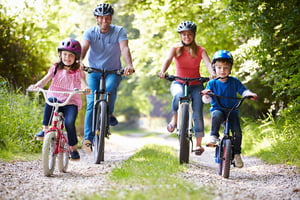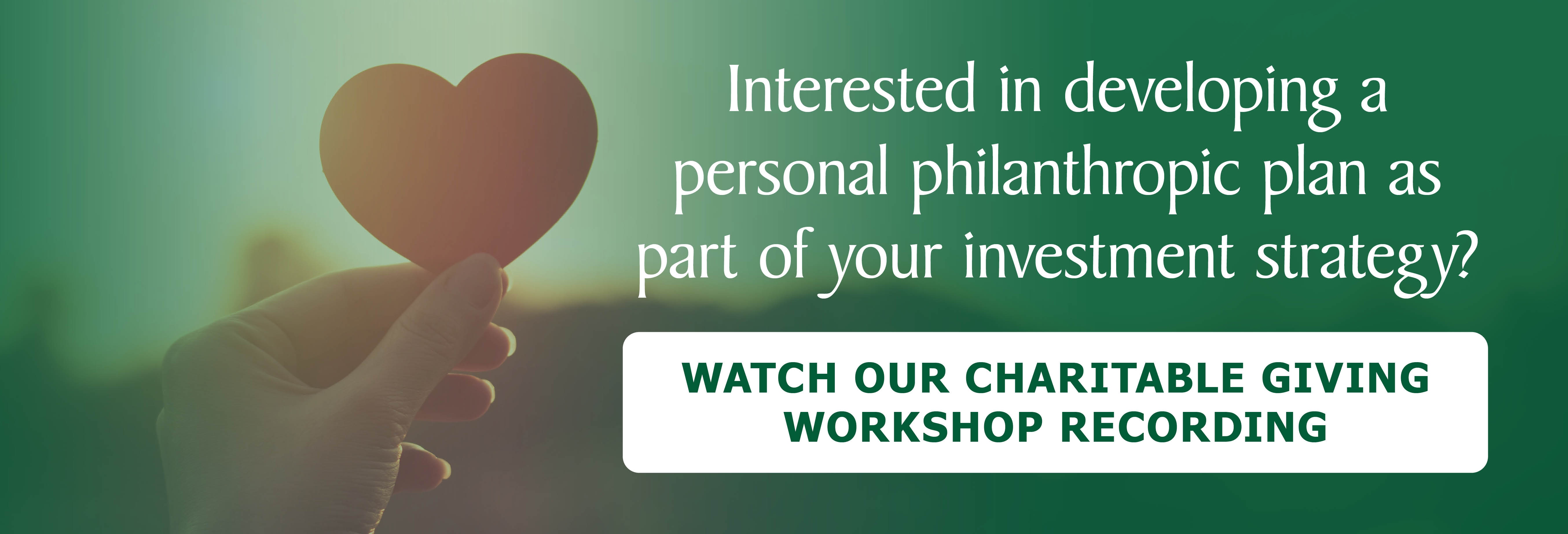 Teaching young children or grandchildren about charitable giving and the environment may instill values they will take through the rest of their life. I believe if the younger generation can learn to respect and care for the world they live in from a young age, they will help to preserve it for future generations. By establishing good habits early in life, those habits are more likely to stick with kids as they get older. Together we can take collective action towards solutions and we can learn these actions at a young age.
Teaching young children or grandchildren about charitable giving and the environment may instill values they will take through the rest of their life. I believe if the younger generation can learn to respect and care for the world they live in from a young age, they will help to preserve it for future generations. By establishing good habits early in life, those habits are more likely to stick with kids as they get older. Together we can take collective action towards solutions and we can learn these actions at a young age.
- SHOW THEM THAT THEY ALREADY DO IT. Smiling at someone on the street, holding doors open for people who need a hand or visiting a sick relative can be considered charity because it warms someone's heart. Engage kids to think about and look for how they might help friends, neighbors or grandparents.
- LET THEM CHOOSE THEIR OWN CAUSES. Talk to kids about the different kind of charities that exist. Bring up ideas that might resonate with them. You might choose to take them to visit an animal shelter. Consider organizations that focus on the needs of kids, for example charities that collect and pack school supplies for underprivileged kids or pack food for kids that may not get regular meals except when they are in school.
- CREATE A CHARITY JAR to be used by your family when they receive gifts of money or an allowance. Invite children to share some of their allowance with others by adding some of their money to the jar. As the jar fills, take turns deciding where to contribute the contents.
- MAKE IT A FAMILY AFFAIR. Some families like to use Thanksgiving as a time to identify and make a donation to those charities that might be meaningful to each of the family members. Consider asking everyone in the family to come to Thanksgiving dinner with a charity in mind and share with the table the reason they chose that charity.
- TAKE YOUR KIDS OUTSIDE. Spending time outside and showing them your love of the outdoors is probably the best way to start your child on the eco-conscious journey.
- REDUCE, REUSE, RECYCLE. Teach children to use the appropriate receptacle for their waste: reduce, reuse, and when necessary recycle as much as you can. Challenge the kids and your family with games, such as seeing if you can keep your trash for the week down to one bag, maybe even one mason jar. Visit a recycling center to understand how recycling works.
- WORK TOGETHER IN A GARDEN OR COMPOST PROJECT. Most kids love to play in the dirt and composting creates a medium for plants that is filled with the nutrients they need to flourish. This helps kids connect the food they eat to where it comes from. Composting helps the environment and reduces the trash we send to landfills.
- ASK THE KIDS TO HELP YOU USE UP ALL THE FOOD YOU BUY. In the U.S. food waste is estimated at between 30 to 40 percent of the food supply. A lot of energy is used in getting that food to market, and we can teach our kids to think about the food we buy and eat.
Consider making an everlasting pot of “stone soup” with the kids. In Tamar Adler’s book "An Everlasting Meal: Cooking with Economy and Grace," she gives ideas on how to throw nothing out. She keeps a pot of stock going at all times that has been made from all the bits and pieces that often go into the garbage, broccoli stems, corn cobs, onion ends, etc. Adler writes, “Meal ingredients must be allowed to topple into one another like dominos.” If soup stock isn’t your thing there is a whole host of other food saving ideas in her book. - WALK OR RIDE BIKES TO VARIOUS DESTINATIONS. Not only is it healthier, it’s way more fun, cheaper than driving, helps the environment and helps kids explore new areas, new roads and new routes.
- If you are feeling like you would like some EDUCATIONAL MATERIAL for your kids: Climategen.org, a local Minnesota charity, has climate change curriculum resources for kids in grades 3 – 12. There are a number of different lesson plans that emphasize the connection between our energy use and consumption, the resulting impact on our climate, and energy solutions that mitigate its impact.
Our kids will inherit the unparalleled impact of climate change and with our encouragement can become our most powerful advocates for change. By teaching kids how to see the world through a lens of how they can make it a better place for future generations we teach them compassion, resiliency, and connection.




